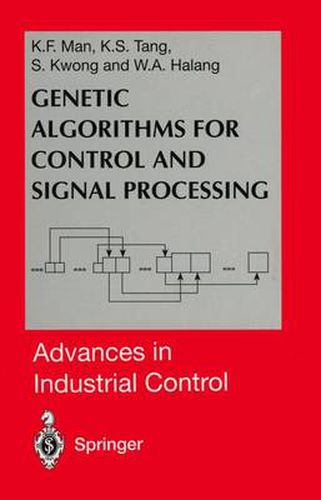Readings Newsletter
Become a Readings Member to make your shopping experience even easier.
Sign in or sign up for free!
You’re not far away from qualifying for FREE standard shipping within Australia
You’ve qualified for FREE standard shipping within Australia
The cart is loading…






This title is printed to order. This book may have been self-published. If so, we cannot guarantee the quality of the content. In the main most books will have gone through the editing process however some may not. We therefore suggest that you be aware of this before ordering this book. If in doubt check either the author or publisher’s details as we are unable to accept any returns unless they are faulty. Please contact us if you have any questions.
The series Advances in Industrial Control aims to report and encourage technology transfer in control engineering. The rapid development of control technology impacts all areas of the control discipline. New theory, new controllers, actuators, sensors, new industrial processes, computer methods, new applications, new philosophies, … , new challenges. Much of this development work resides in industrial reports, feasibility study papers and the reports of advanced collaborative projects. The series offers an opportunity for researchers to present an extended exposition of such new work in all aspects of industrial control for wider and rapid dissemination. The emerging technologies in control include fuzzy logic, intelligent control, neural networks and hardware developments like micro-electro-mechanical systems and autonomous vehicles. This volume describes the biological background, basic construction and application of the emerging technology of Genetic Algorithms. Dr Kim Man and his colleagues have written a book which is both a primer introducing the basic concepts and a research text which describes some of the more advanced applications of the genetic algorithmic method. The applications described are especially useful since they indicate the power of the GA method in solving a wide range of problems. These sections are also instructive in showing how the mechanics of the GA solutions are obtained thereby acting as a template for similar types of problems. The volume is a very welcome contribution to the Advances in Industrial Control Series. M. J. Grimble and M. A.
$9.00 standard shipping within Australia
FREE standard shipping within Australia for orders over $100.00
Express & International shipping calculated at checkout
This title is printed to order. This book may have been self-published. If so, we cannot guarantee the quality of the content. In the main most books will have gone through the editing process however some may not. We therefore suggest that you be aware of this before ordering this book. If in doubt check either the author or publisher’s details as we are unable to accept any returns unless they are faulty. Please contact us if you have any questions.
The series Advances in Industrial Control aims to report and encourage technology transfer in control engineering. The rapid development of control technology impacts all areas of the control discipline. New theory, new controllers, actuators, sensors, new industrial processes, computer methods, new applications, new philosophies, … , new challenges. Much of this development work resides in industrial reports, feasibility study papers and the reports of advanced collaborative projects. The series offers an opportunity for researchers to present an extended exposition of such new work in all aspects of industrial control for wider and rapid dissemination. The emerging technologies in control include fuzzy logic, intelligent control, neural networks and hardware developments like micro-electro-mechanical systems and autonomous vehicles. This volume describes the biological background, basic construction and application of the emerging technology of Genetic Algorithms. Dr Kim Man and his colleagues have written a book which is both a primer introducing the basic concepts and a research text which describes some of the more advanced applications of the genetic algorithmic method. The applications described are especially useful since they indicate the power of the GA method in solving a wide range of problems. These sections are also instructive in showing how the mechanics of the GA solutions are obtained thereby acting as a template for similar types of problems. The volume is a very welcome contribution to the Advances in Industrial Control Series. M. J. Grimble and M. A.